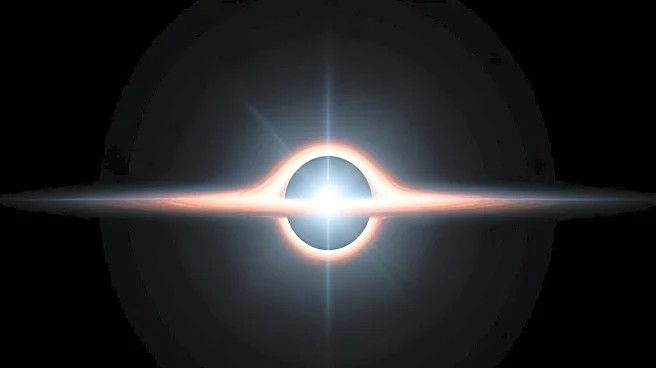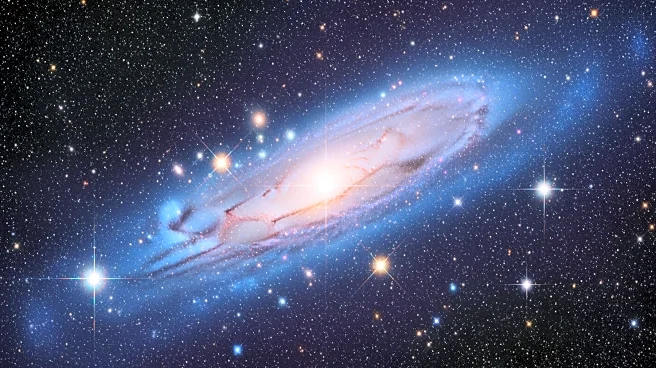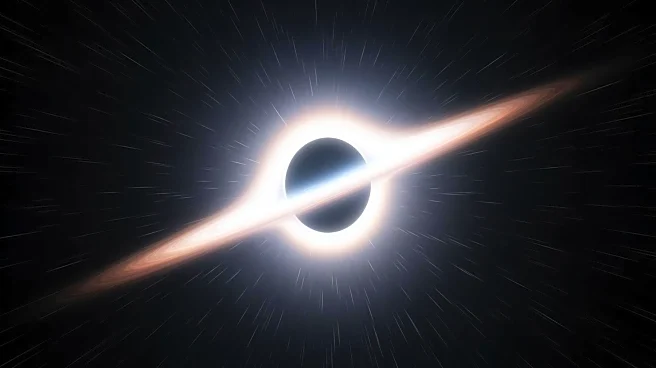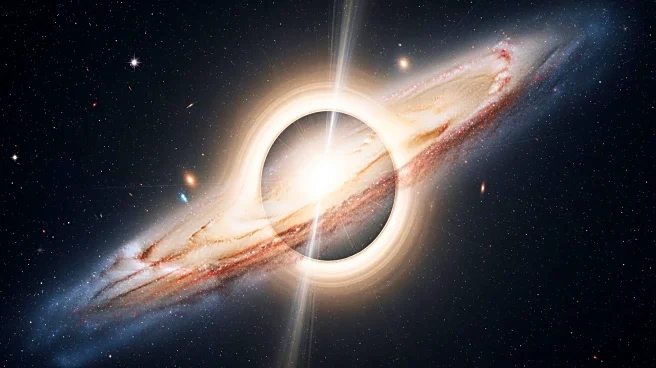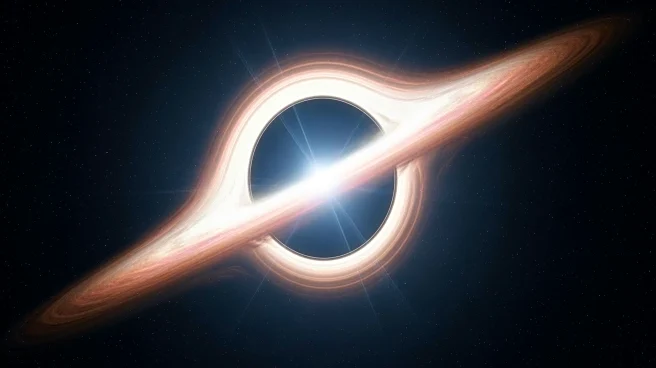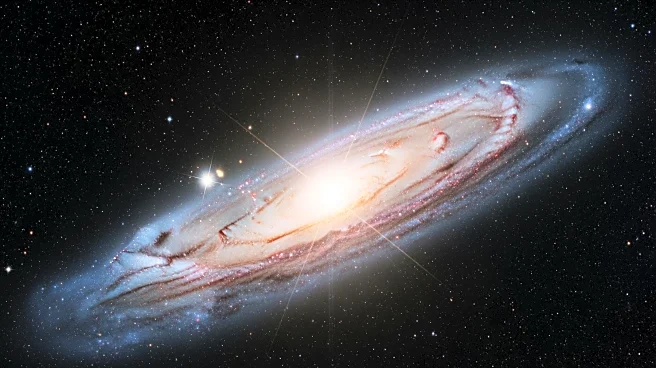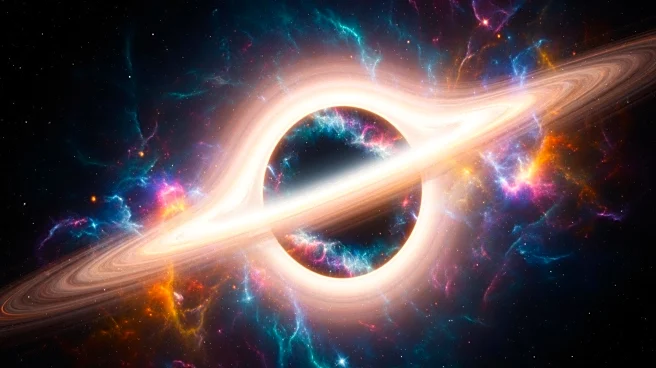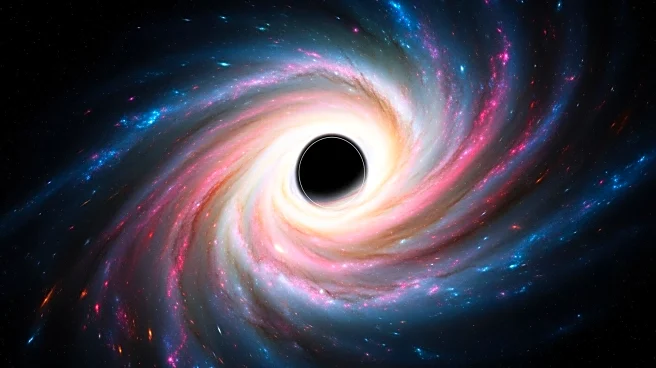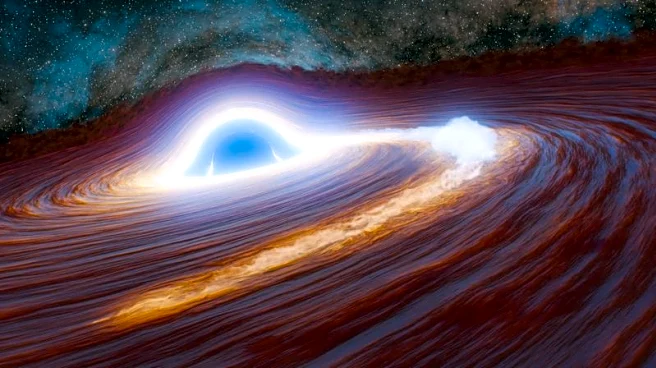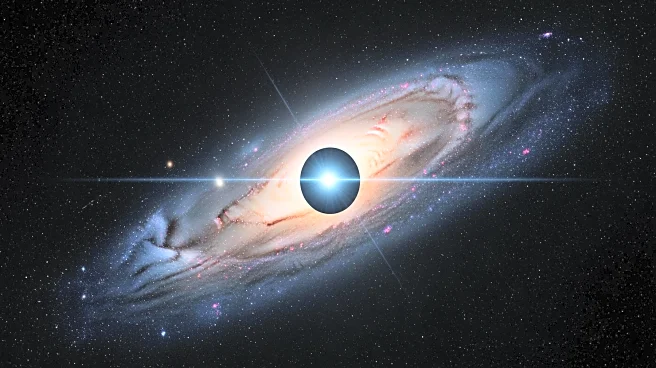What's Happening?
Astronomers have observed the brightest flare ever recorded from a supermassive black hole, caused by a tidal disruption event (TDE) where a massive star was torn apart. This event, nicknamed 'Superman,' occurred in an active galactic nucleus nearly 20
billion light years away. The flare's brightness was initially underestimated until follow-up observations revealed its true distance and intensity. The flare increased the brightness of the black hole's surrounding area by a factor of 40, providing new insights into the dynamics of such cosmic phenomena.
Why It's Important?
This discovery enhances our understanding of the environments around supermassive black holes and the processes that occur during tidal disruption events. By studying such flares, scientists can gain insights into the behavior of matter under extreme gravitational forces and the conditions that lead to such powerful emissions. This knowledge is crucial for developing models of black hole activity and understanding the role of these cosmic giants in galaxy evolution.
What's Next?
Continued observation of the flare as it fades will help astronomers refine models of tidal disruption events and the environments of active galactic nuclei. Future research will focus on identifying more such events and understanding the variability in black hole activity. This could lead to a better grasp of the mechanisms driving these powerful cosmic phenomena and their impact on the surrounding universe.
